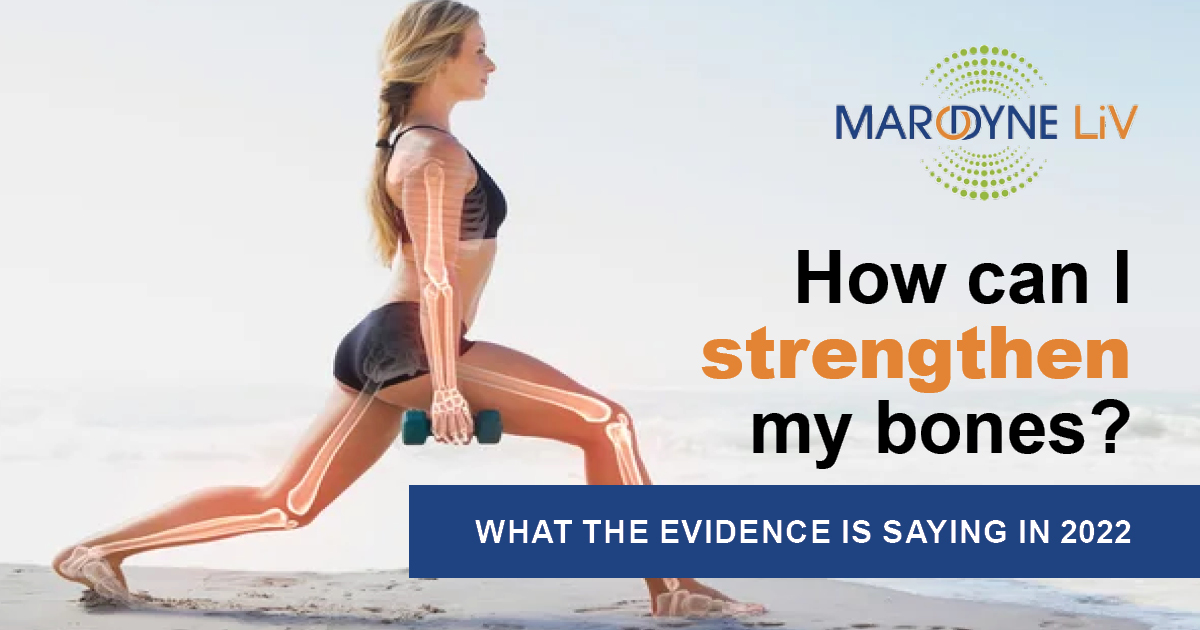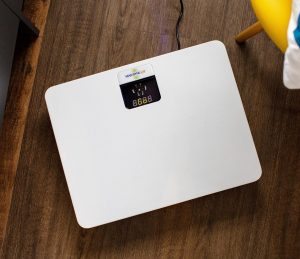
By 2023 it is estimated that 6.2 Australians aged over 50 years will have osteoporosis, osteopenia (weakened bones) or poor bone health. That’s a staggering 31% jump from our stats a decade ago – highlighting the dire state of our bone health – and setting the realisation that for many, their ‘golden years’ may look very different from the active and comfortable retirement they’d planned.
To give you a glimpse into the bigger picture, fractures associated with osteoporosis are shown not just to impair your mobility but also reduce your independence, increase your depression risk, and increase your risk of premature death.
So, what can be done to help prevent our bones and joints from becoming painful, restrictive and fragile? Today, we’re reviewing the current evidence in 2022 about the best practical ways you can start improving your bone health – so you can still spend your retirement doing the things you’ve worked so hard for and have been looking forward to for so long.
Medications for Bone Health
Reviewing international guidelines and procedures shows that medications are one of the most common treatments prescribed to assist bone health. Depending on the type of medication prescribed for you, it may work by:
- Reducing the activity (or the maturation) of cells called osteoclasts, which work to clear aged or damaged bone cells. By slowing the removal of old bone, this attempts to maintain your bone density and bone strength
- Speeding up the bone-building process
- Replacing estrogen, as this hormone has a vital role in producing bone and is often reduced during menopause
Your doctor carefully chooses the type and action of the medication that is best for you after a comprehensive assessment of your medical history, level of bone mineral density, and current circumstances. There is no one-size-fits-all medication, and it’s important to understand the risks.
Pros & Cons
Once you have a prescription from your doctor, the greatest benefit of bone health medications is that they’re usually relatively simple to use – often being taken as a daily tablet or injection, depending on your dosage and medication type. Those without mobility issues who can easily get to their GP visits and the chemist, and will remember to take these medications as instructed, can get good benefits from them – certain medicines are shown to reduce the fracture risk in postmenopausal women with osteoporosis1.
On the downside, medications carry with them a risk of side effects, the most common of which include the inflammation of the stomach or oesophagus (leading to pain, heartburn, nausea, vomiting, constipation or diarrhoea), headache or dizziness, mouth ulcers, and joint aches or swelling. Rarer but more severe side effects include jaw osteonecrosis (bone death around the jaw), blurred vision, skin reactions and upper thigh bone fractures2.
Additionally, some of the medications prescribed can’t be taken for longer than one to two years as there haven’t been enough long-term studies for their safety. These often include bone-building medications, where studies have shown that the effects quickly stop working after you stop taking them. In this case, you will need to have taken other measures to promote your ongoing bone health.
Best practice tips
- Always disclose your complete medical history and current circumstances with your doctor when discussing potential medications for bone health, so you understand your risks. Certain medical conditions (like celiac disease), as well as specific medications (like steroids), may increase your osteoporosis risk – and these will need to be considered when assessing your suitability for new medications.
- You should also discuss whether drug holidays may need to be scheduled to minimise your risk of serious side effects, as recommended by the American Association of Clinical Endocrinologists (AACE). Approach these holidays with care as studies have found that just over 15% of people who take a holiday from their osteoporosis medication have a bone fracture3.
Exercise & Weight Management
Exercise is currently still praised as a key to helping promote bone health – as well as your overall well-being, from your muscle strength to your balance and your weight management. Exercise works because your bones respond and become stronger when you complete strength training or weight-bearing exercise, like jogging, hiking, dancing – or something as simple as walking. Exercises like cycling and swimming have not been shown to have the same benefits, though they are great for other areas of your health like your cardiovascular health.
The recommendations around weight management focus on maintaining a healthy weight, as opposed to losing weight. Studies indicate that weight loss is associated with bone loss and increased fracture risk in older adults4. While these effects appear to be modest with a single weight loss event, repeated weight loss efforts – or rapid weight loss due to caloric and restrictions – appear to be linked to longer-term negative consequences for your bone health.5
Pros & Cons
A great benefit of exercise is that including more weight-bearing and strength training activities can be an easy and simple addition to your day, working to help improve your overall health as well as your bone health. The downside is that you’ve got to be physically capable to do it, and must make the time and effort, while keeping up the motivation to do it regularly and challenge the body to varying degrees. This is often easier said than done, with many having all the right intentions – but not following them through. Up to 50% of people have been shown to not complete their exercise programs when they’re prescribed as part of their rehabilitation by health professionals6, and currently 85% of Australians are failing to meet the basic recommended exercise targets of at least 150 minutes per week.7
Balanced Diet With Supplements As Needed
A balanced diet, particularly with regards to calcium and vitamin D intake, is widely documented in assisting with healthy bone development and osteoporosis prevention. When the body is low in calcium, it will take it from the bones, decreasing bone mass and initiating or worsening osteoporosis. Between 1000-1200mg is recommended for men and women aged over 50 years and varies depending on other medical conditions, weight, age and the like. Calcium should ideally be ingested through a balanced diet, but when this is lacking, supplements can be taken. Interestingly, high calcium intake from supplements have been shown to increase the risk of developing kidney stones, whereas a high dietary calcium intake may prevent kidney stones.8
Vitamin D is also essential for healthy bone development and maintenance due to its role in calcium absorption and other complex mechanisms. When Vitamin D levels are low, osteoclast cells are triggered to release calcium from the bones and out into the blood. The recommended intake of vitamin D ranges between countries but typically lies around 800-1000 IU and can be obtained from sunlight, diet and supplements.
It should be noted that estrogen, magnesium, boron and other vitamins, minerals and hormones also play an important role in bone health maintenance and it’s important to have your diet and current blood levels assessed to ensure you get appropriate advice.
Pros & Cons
We all have to eat anyway – so balancing your diet to get enough of the right nutrient-rich foods can be an easy way for many to promote their bone health. There are very few downsides to eating a healthy, balanced diet, presuming that we’re in control of our meals and food shopping. When a range of supplements are added to the equation, the cons could include the ongoing added cost to your weekly budget, as well as ideally needing your supplements to be approved by your GP for any possible interactions. For example, for those taking thyroid hormone supplements, calcium decreases the absorption of the thyroid medication levothyroxine, so you’ll need to coordinate your supplements meticulously to help reduce any risks.
Tip: It is also recommended to avoid consuming alcohol and to quit smoking, to best promote your bone health.
The Marodyne Home-Use Device

Marodyne is the world’s first medical device that has been proven to prevent osteoporosis. It uses low intensity vibrations that move up the body through your feet to stimulate your stem cells. Your stem cells help build bones and prevent bone loss. The device resembles a scale that you stand on. Each ten minute home-based daily session helps with maintaining your bone mineral density and preventing osteoporosis, while also helping with muscle mass and strength, balance and coordination, and blood and lymphatic flow.
Marodyne is certified by the European Union, recognised by the Royal Osteoporosis Society, and is backed by over 50 years of scientific evidence and clinical research. It is suitable for anyone with osteoporosis, osteopenia or those at risk of poor bone health, post-menopausal women, and children and young adults with bone-damaging conditions.
Pros & Cons
The pros for this device include being natural and safe with no known side effects, and having no drug interactions or other complications. It is also very easy to use from the comfort of your own home, while watching TV or at your leisure. It’s painless and comfortable, and turns on with the press of a button. The con is that it has a one-off cost which may not make it instantly affordable to everyone, but unlike supplements, gym memberships or medications, it has no ongoing costs once you have the device. The Marodyne can also be used by all members of the household for maximum cost efficiency.
Which Is The Best Way To Strengthen My Bones
We think that all of these treatments can play a role in a person’s overall health, wellbeing and management of their bone health – particularly when it comes to diet and exercise. With this said, we recognise that for most people at risk of osteoporosis or that are currently diagnosed, a proactive and direct approach is needed to get the best results for the long-term. This helps to secure their future, helping to keep them active, mobile and independent for as long as possible.
Our recommendation is the Marodyne, not just due to it’s world-first technology, but due to its safety, efficacy and having no side effects. You can’t overdose on it or get it wrong – some people spend up to four hours on the device and gain fantastic benefits.
To learn more about the Marodyne and how you can get one in your home, please contact Marodyne LiV Australia on 1300 653 522 or at sales@rehacare.com.au.
[1] https://www.ncbi.nlm.nih.gov/pmc/articles/PMC3513863/
[2] https://arthritisaustralia.com.au/medication-search/bisphosphonates-oral/
[3] https://www.sciencedaily.com/releases/2018/05/180504122349.htm
[4] https://www.karger.com/Article/Fulltext/500779
[5] https://www.ncbi.nlm.nih.gov/pmc/articles/PMC4016235/
[6] https://www.ncbi.nlm.nih.gov/pmc/articles/PMC5856927/
[7] https://www.abs.gov.au/statistics/health/health-conditions-and-risks/national-health-survey-first-results/latest-release
[8] https://www.ncbi.nlm.nih.gov/pmc/articles/PMC5768298/
